The Japanese toilet comes in many variations. This high-tech Japanese toilet is referred to as a ‘washlet’ (ウォシュレット pronounced washuretto), which is the topic of this article (and not the traditional in-floor/squat style toilets).
During your Japan travels, you will most likely encounter the washlet version of the Japanese toilet at Internet cafes, hotels, ryokans, capsule hotels, restaurants and basically anywhere except for public toilets (although some newer train/large train stations, like shinkansen train stations will have them).
Here are just a few of the variations Japan Travel Mate has seen:
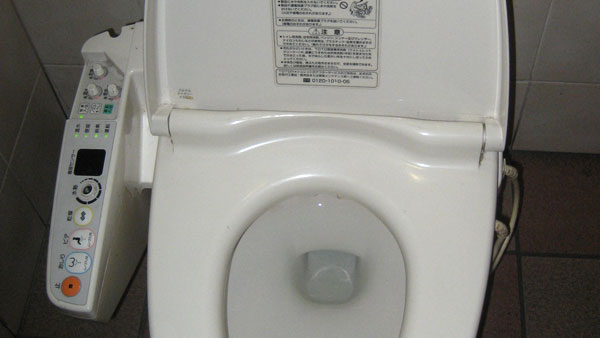
Just about every toilet will have both Japanese and English labels, so it is quite easy to use.
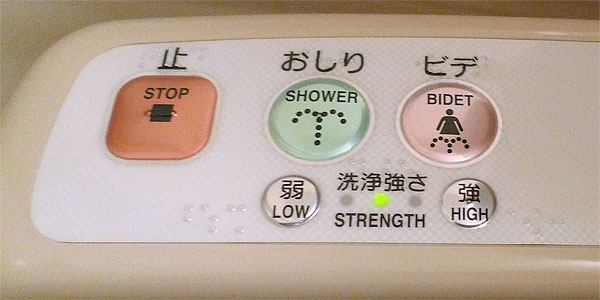
The most basic versions will have a Shower and Bidet function, and a Stop button which stops the Shower or Bidet.
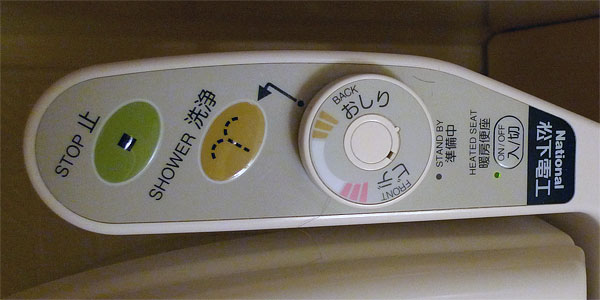
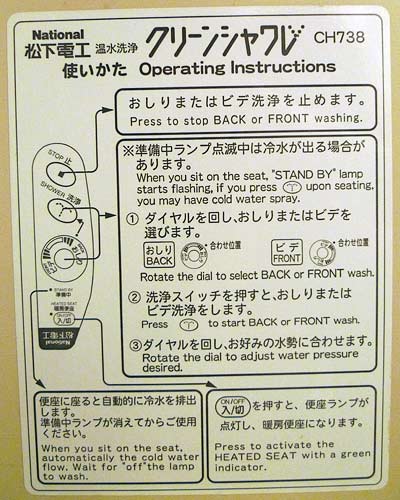
You won’t often see full operating instructions. The one above was from a hotel room. It explains the basics of how the Japanese toilet works.
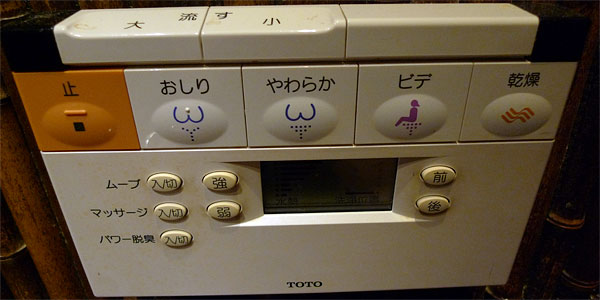
More fancier places will have high-tech version of the toilet controls with many more features. Here is an explanation of what you might encounter:
- Flushing the toilet: most toilets have a lever beside the cistern tank, but the high-end ones will have buttons instead. Some even flush automatically:
- 大 (ookii, big) is for a full flush.
- 小 (chiisai, small) is for a half flush.
- 止 (yame/yameru, stop) will stop the current function, like turn off the spray or dryer.
- おしり (oshiri, bum/arse/butt/anus) extends a spray jet from under the seat which targets the bit that you would usually wipe with toilet paper. Sometimes I find this to be a really hard jet of water, tricky to get used to.
- やわらか (yawaraka, tender/soft) is similar to oshiri, but is a softer and more?dispersed spray.
- ビデ (bide, bidet) is one for the ladies, to wash the front bits.
- 乾燥 (kansou, dry) is a blow dryer, to dry up all that water spray action.
- ムーブ (muubu, move) will rotate the spray nozzle in various directions.
The rest of the buttons can be ignored, you don’t want to spend too much time on the toilet! So when using a Japanese toilet, just be prepared for a bit of a shock…



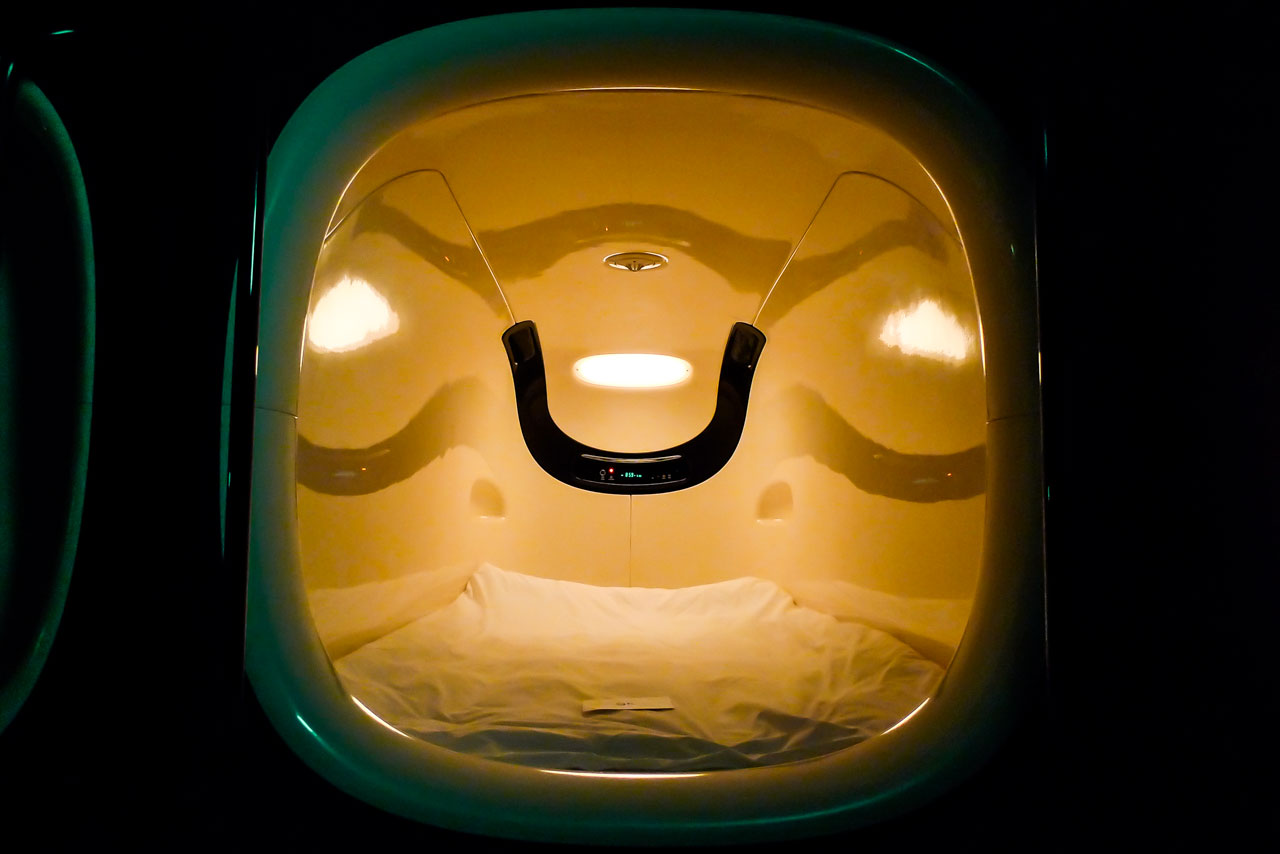
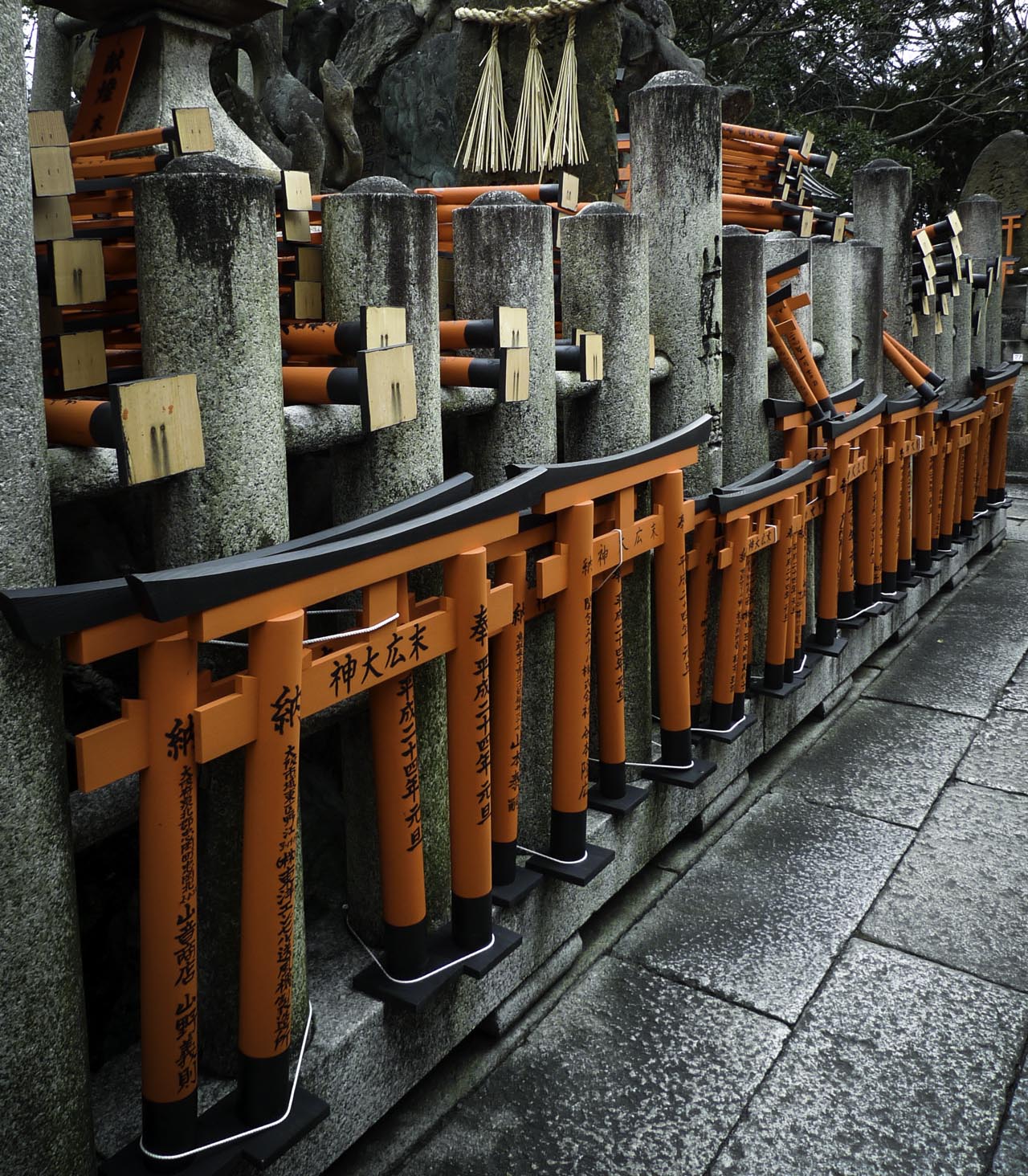
Great post!! Love the high-tech toilets in Japan and they keep coming up with new ones all the time. Just discovered one in Tokyo made by Sega that has a video game and you can play it as you go to the toilet. Strange but amazing stuff!!
I would like to know how much it would cost for this device. I want to purchase one in Canada Thank you .
That’s a very interesting question Mary. You’ll have to ask your local kitchen supplies store. I don’t buy them, just sit on them! But they definitely are available outside Japan.